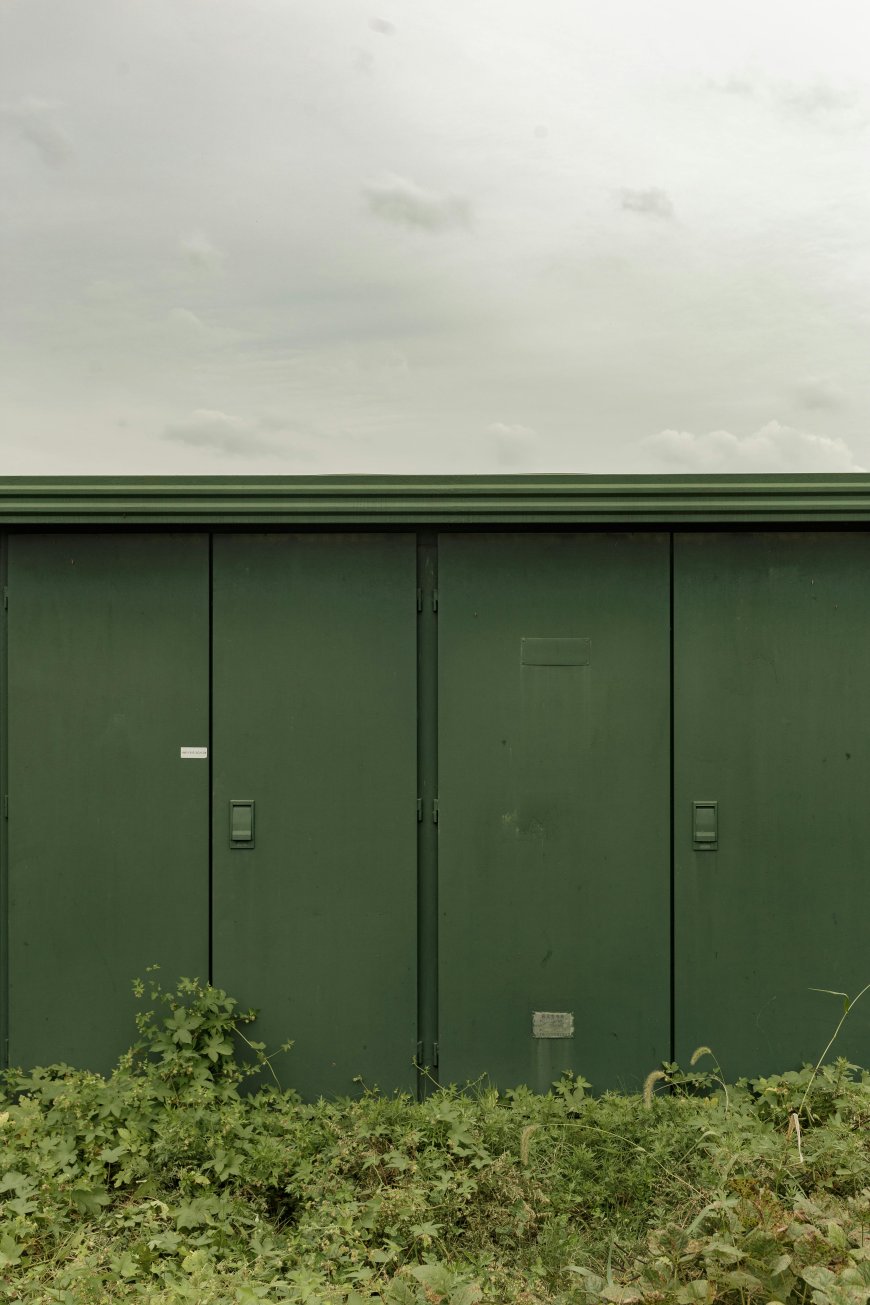Indoor vs Outdoor Car Storage: What’s the Cost Difference?
Compare the costs of indoor vs outdoor car storage to find the best option for your vehicle. Learn about pricing, benefits, and what affects storage rates.
Have you ever found yourself wondering where to keep your car safe when life gets a little dizzy?
Maybe you’re moving into a new city, planning a long trip with your loved ones, or just don’t have enough garage space at home. Whatever the reason is, finding the right car storage solution can give you peace of mind and protect your vehicle while it’s not in use. When deciding on the best option, comparing outdoor vs indoor car storage rates is important.
Outdoor storage is generally more affordable, but it offers less protection, while indoor storage provides enhanced security and weather protection at a higher cost.
However, selecting the appropriate storage type is very important for maintaining your vehicle's condition and value. Therefore, the right choice provides you a peace of mind knowing your vehicle is secure and protected until you're ready to use it again.
Understanding Indoor Car Storage
Indoor car storage represents the premium option for protecting your vehicle within a fully enclosed facility, shielding it from environmental hazards including rain, snow, UV rays, and temperature extremes.
Many indoor car storage facilities feature climate control systems that maintain optimal temperature and humidity levels, preventing common issues such as paint deterioration, and rust formation.
However, their security measures generally include 24/7 surveillance cameras, personalized access codes, and alarm systems, significantly reducing risks of theft, vandalism, or unauthorized access.
Understanding Outdoor Car Storage
Outdoor car storage represents a cost-effective solution for vehicle owners seeking flexibility and convenience. The primary advantages of outdoor car storage include significantly lower monthly rates compared to indoor storage, unrestricted 24/7 accessibility without appointment requirements.
Most outdoor storage facilities feature security fencing, surveillance cameras, and gated access to protect stored vehicles.
However, outdoor storage does present certain limitations, including exposure to weather elements that may accelerate paint fading, and it can also cause potential rust.
Cost Breakdown: Indoor Car Storage
-
Average National Pricing: Indoor car storage units typically range from $100 to $300 per month, depending on the facilities provided and the unit size.
-
Premium Features: Expect higher rates for units with climate control, advanced security systems, or additional amenities. As they can add $50 to $100+ to the monthly cost.
-
Regional Price Differences: Storage rates are generally higher in major cities and urban areas due to increased demand and limited space.
-
Seasonal Fluctuations: Prices may rise during peak seasons, such as winter or holidays, when demand for secure car storage increases.
Cost Breakdown: Outdoor Car Storage
-
Average National Pricing: Outdoor car storage typically ranges from $45 to $150 per month, making it the most budget-friendly option for vehicle owners.
-
Basic vs. Covered Options: Basic outdoor storage (open lots) is at the lower end of the price range, while covered outdoor spaces (with canopies or carports) offer added protection at slightly higher rates, usually $75 to $200 per month.
-
Long-Term Discounts: Many facilities offer discounts for long-term contracts, such as reduced monthly rates for 6- or 12-month reservation.
-
Regional Price Variations: Storage costs are higher in major cities and coastal areas due to demand and real estate prices, while suburban and rural locations are more affordable.
Direct Cost Comparison
Side-by-Side Pricing:
Indoor car storage typically costs between $150–$500 per month, depending on location, amenities, and unit size. Outdoor storage is more budget-friendly, with rates generally ranging from $50–$150 per month.
Reason of Price Differences:
Indoor storage demands higher rates due to enhanced protection, climate control, and security features. Outdoor storage is less expensive but exposes your car to weather, which can lead to increased wear and tear over time.
Cost-Benefit Analysis:
While indoor storage is a larger upfront investment, it offers superior protection against weather, theft, and vandalism. This can help preserve your car’s value and reduce maintenance costs, making it a smart choice for classic, luxury, or long-term storage. Outdoor storage saves money in the short term but may lead to higher maintenance costs due to exposure to the elements.
Long-Term Implications:
In the long run, the cost of outdoor storage can add up with situations such as, potential repairs, and paint damage. Indoor storage is more expensive monthly, but it can extend your vehicle’s lifespan and help maintain its resale value.
Hidden Costs:
Don’t overlook extra expenses such as required insurance (often $10–$50 per month), administrative fees, or charges for premium features like 24/7 access or enhanced security. These can impact your total cost regardless of the storage type you choose.
Factors Affecting Storage Costs
-
Location Impact: Urban storage facilities generally charge higher rates than suburban or rural locations due to higher property values, demand, and limited space. For example, car storage in city centers can cost up to 40-50% more than similar units in the suburban and rural areas.
-
Facility Amenities: Features such as climate control, 24-hour access, and on-site staff increase monthly costs. Climate-controlled units can add $25–$50 or more per month to your bill.
-
Security Features: Enhanced security measures like surveillance cameras, gated access, and individual alarms raise the price but they also provide a peace of mind, especially for high-value vehicles.
-
Seasonal Demand Fluctuations: Prices often rise during peak seasons, such as winter in colder regions or summer in humid areas, when demand for protected storage increases.
Which Option Provides Better Return on Investment (ROI)?
Protection Value vs. Cost
Indoor storage offers better protection against weather, theft, and vandalism, making it the best choice for long-term storage. Outdoor storage costs less and works well for everyday or tough cars, but it doesn’t provide as much protection.
When Indoor Storage Makes Financial Sense
If you own a high-value, classic, or luxury car, indoor options help preserve your vehicle’s condition and value, potentially saving on future maintenance and repair costs.
When Outdoor Storage Is More Economical
For short-term storage or vehicles used regularly, outdoor storage provides a budget-friendly solution, especially if your vehicle can withstand exposure to the elements.
Cost Considerations for Special Vehicles
Classic, luxury, or seasonal vehicles benefit most from indoor, climate-controlled storage, as it prevents rust, paint damage, and mechanical issues that could devalue the car.
Insurance Implications
Some facilities require insurance, which may add $10–$50 per month. However, storing your car indoors can sometimes lower insurance premiums due to reduced risk of damage or theft.
How to Prepare Your Vehicle for Storage
-
Fill the gas tank and add a fuel stabilizer to keep the fuel fresh and prevent moisture buildup.
-
Change the oil and top up all fluids, including coolant and brake fluid, to protect internal components.
-
Inflate tires to the recommended pressure and consider using jack stands for long-term storage to avoid flat spots.
Conclusion
Indoor car storage offers great protection, but it also comes at a higher monthly cost, while outdoor storage is more affordable but exposes your car to the elements.
That’s why a thorough car storage cost comparison is important before making your choice. Be sure to factor in your vehicle type, local climate, budget, and how often you’ll need access when making your decision. Carefully preparing your car and selecting the right storage option will help keep your vehicle in excellent condition and can save you from costly repairs down the line.
What's Your Reaction?
 Like
0
Like
0
 Dislike
0
Dislike
0
 Love
0
Love
0
 Funny
0
Funny
0
 Angry
0
Angry
0
 Sad
0
Sad
0
 Wow
0
Wow
0








































